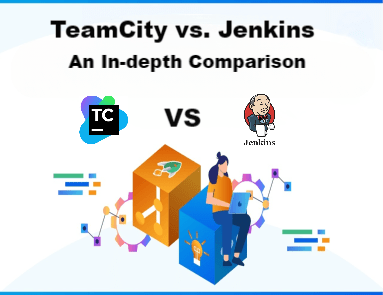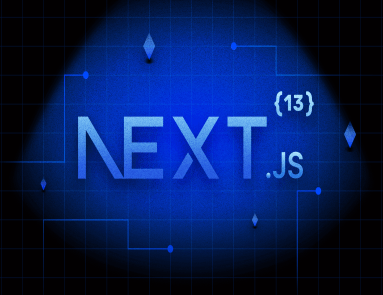TeamCity vs. Jenkins An In-depth Comparison

While several CI/CD tools are available, the two most preferred options are TeamCity and Jenkins. Both are powerful tools that help web developers streamline their workflow. Nevertheless, they differ in various aspects. This blog post highlights the differences between TeamCity vs. Jenkins based on several factors. Understanding these dissimilarities will help you choose the best option for your next project. So without any delay, let us get started. TeamCity vs. Jenkins: Overview What is TeamCity? Developed by JetBrains, TeamCity is a renowned continuous integration and delivery server system. It was first released in 2006. However, it has come a long way since then. The software enables users to relish flexible workflows, collaborate with other developers, and do unlimited development practices. This Java-based platform supports various programming languages and can integrate with Visual Studio, Eclipse, and more. What is Jenkins? Jenkins is a server-based, open-source CI/CD tool that allows users to build, test, and deploy web codes. It operates within servlet containers like Apache Tomcat. Jenkins was initially released on the 2nd of February 2011 by Kohsuke Kawaguchi. Jenkins operates in Java language. As a result, users can install it on UNIX, LINUX, and Windows. TeamCity vs. Jenkins: Comparison of Different Factors User-friendliness What’s the benefit of making a powerful software or tool that users can’t understand? Ease of use is one of the crucial factors to assess when choosing a CI/CD platform. You can’t leverage the platform if you cannot navigate through its interface. TeamCity features a clean web-based interface that simplifies navigation. Users often praise its straightforward setup and configuration. You get an easy-to-use dashboard with detailed build logs. In comparison to TeamCity, Jenkins can be a little difficult to navigate for beginners. However, overall it is good. The platform offers various customization options. It also supports custom CSS and Javascript files. Jenkins requires more configuration initially. Nevertheless, it won’t be that tough for you to understand it. Installation It is convenient to install TeamCity. Download the TeamCity server and read the documentation. It mentions all the instructions that you have to follow step-by-step. To install Jenkins, you need to have Java in your system. However, the installation is as smooth as that of TeamCity. As it is an open-source, you will set up the server and accomplish dependencies manually. Community Support Problem-solving approach, user engagement, and knowledge sharing are primary parts of an excellent community support system. TeamCity has community support available on its website. Users can contact their team with details of their issues. The support team might ask for information related to system or logs to fix the problem. Users can also share troubleshooting information for different issues in the knowledge base. Jenkins has the upper hand in terms of community support. Since it is an open-source platform, users share their troubleshooting experiences. Beginners can learn and resolve their issues from the experiences of previous customers. Scalability Scalability is one of the imperative considerations when deciding between TeamCity vs. Jenkins. TeamCity is capable of handling large-scale developments and deployments. Users get built-in support for distributed forms. TeamCity can distribute workload through different build agents. As a result, the platform can manage large projects efficiently. Jenkins won’t disappoint you in terms of scalability as well. With additional setup and configuration, Jenkins can manage large deployments and projects. You will have to set up distributed build agents to improve scalability. Moreover, you can also use external tools such as Kubernetes. Plugin Support TeamCity offers you almost all the basic required integrations. It has a wide range of built-in features for different technologies. For example, you can integrate it with the Visual Studio Team service. Jenkins is slightly better when it comes to integrations. You can choose from hundreds of free plugins based on your requirements. Key Integration Both platforms allow integration with different version control systems, such as Git, Mercurial, SVN, and more. TeamCity prioritizes native integration for a seamless developer experience. You can quickly integrate with JetBrains’ suite of IDEs. On the other hand, Jenkins is an open-source platform. As a result, it supports a broad range of integration with third-party tools. Security Security is another vital aspect you cannot compromise on. TeamCity supports integration with the Snyk security plugin. The plugin is capable of doing vulnerability scanning in the build pipeline. The plugin can identify and resolve various threats and risks. Jenkins also comes with various security features. Users can enable features like user authentication and more. Furthermore, Jenkins also allows integration with external authentication systems, such as LDAP, Active Directory, etc. Pricing TeamCity has three versions: TeamCity Professional, TeamCity Enterprise (from $1,999 per year), and TeamCity Cloud ( from $45 per month). Out of three, TeamCity Professional provides free access. You can even use it for commercial use. However, it comes with certain limitations. Note: Since the price keeps changing, visit the official website to check the current price. Jenkins is free to use as it is an open-source platform. You can download it and start using it. Conclusion: What Should I Choose? This comparison of TeamCity vs. Jenkins makes you aware of the ins and outs of both platforms. Now you can determine which one fulfills your needs better. Choosing between TeamCity and Jenkins depends on your specific requirements. If you are looking for user-friendly yet a robust CI/CD, go for TeamCity. On the other hand, users looking for extensive customization can choose Jenkins. However, you will have to spend more time on configurations and maintenance of this platform. Evaluate your priorities and make decisions accordingly.
Next.js 13.5: Exploring Features and Improvements

Next.js is an open-source JavaScript framework built using React. It helps web developers make user-friendly web applications and static websites. This renowned React framework has come with its latest version, Next.js 13.5. With each new version, Next.js is getting more powerful. Released on September 19, 2023, this new edition has taken the world by storm. Let us find out what is new about it. This blog explores the exciting Next.js 13.5 features and improvements. Fast Page Loading The latest version of Next.js supports quick page loading. Next.js 13.5 has optimized its core framework. Therefore, web applications load faster without compromising on user experience. The version 13.5 features built-in optimization for fonts, scripts, images, and application scripts. Image Improvements Next.js 13.5 comes with robust image optimization capabilities. In comparison to previous versions, Next.js 13.5 is better in image resizing and compression. As a result, you can deliver your images in a perfect size and format. In addition to this, the framework has added an experimental function unstable_getImgProps(). It supports different use cases without using the <Image> component. Now you can: Work with background-image or image-set. Use <picture> media queries to carry out Art Direction or Light/Dark mode images. Work with canvas context.drawImage() or new Image(). Moreover, now the placeholder prop provides support for arbitrary data: image/ for placeholder images. Improved Startup and Refresh Time Other Next.js 13.5 improvements that are worth mentioning include fast startups and refreshes. You can notice a significant improvement in refresh and startup time. The framework is now more reliable for App router applications. If you compare this new version with the previous Next.js 13.4, it is about 22% faster in local server startup and 29% quicker in HMR (Refresh). Apart from this, it uses about 40% less memory. Next.js 13.5 has optimized expensive file system operations and removed redundant blocking synchronous calls. Caching in Next.js Apps Caching has a crucial role in web application development. It has a direct impact on user experience and performance. Besides this, it minimizes the operation cost of the application by storing rendering work and data requests. Next.js 13.5 allows users to retrieve the stored version of web applications. Since users do not fetch data from scratch every time, they experience fast web loading. Next.js 13.5 supports numerous caching mechanisms. It makes it easier for developers to carry out client-side caching. Some prominent caching mechanisms in Next.js 13.5 include: Data Cache Data Cache is one of the vital Next.js 13.5 updates. It stores the results of different data fetches across server requests and deployments. As a result, once data is fetched and stored, users can access it quickly in subsequent requests. Since the results are not coming from the source, it takes less time. Request Memoization This caching mechanism helps the server to remember the return values of functions. For instance, if the same data is being requested repeatedly in a React component tree, Next.js stores the data instead of fetching it over again. It is beneficial when the same data needs to be accessed. Full Route Cache As the name suggests, this mechanism caches the full HTML. Besides this, it also stores the React Server Component payload of a route on the server. It naturally minimizes the cost of rendering. Router Cache Next.js also stores the cache on the client’s side. It keeps the record of the React Server Component payload for every route segment. The router cache enhances the navigation experience by storing earlier visited routes and prefetching possible future routes. Improved Experience for Developer With the release of every Next.js version, the framework gets better in the developer experience. The developers can notice a noteworthy improvement in TypeScript support, documentation, and error messages. In addition to this, you get access to Next.js CLI. This tool helps you see updates for project setup and management. Metadata API Metadata API is a crucial addition to Next.js 13.5. With this Next.js 13.5 feature, you do not need to struggle with SEO metatags. Earlier, users had to create a file (head.js) to set the metatags for SEO. Next.js version 13.5 features a new way of handling static and dynamic metadata. You can export objects with static information. For dynamic data, you can export functions. This approach is more helpful for managing metadata efficiently. Stable App Router A stable app router is one of the prominent Next.js 13.5 benefits. Now you can use React server components, nested routes & layouts, and simplified data fetching confidently. These updated server components will help you build apps faster. Conclusion It is imperative to stay informed with the evolving world of web development and its latest technologies. Today, Next.js is a keystone of react-based web development. With Next.js 13.5, you enjoy a range of new features and improvements. Whether it is a developer experience, performance, or security, Next.js 13.5 can keep you ahead in the competitive web development world.